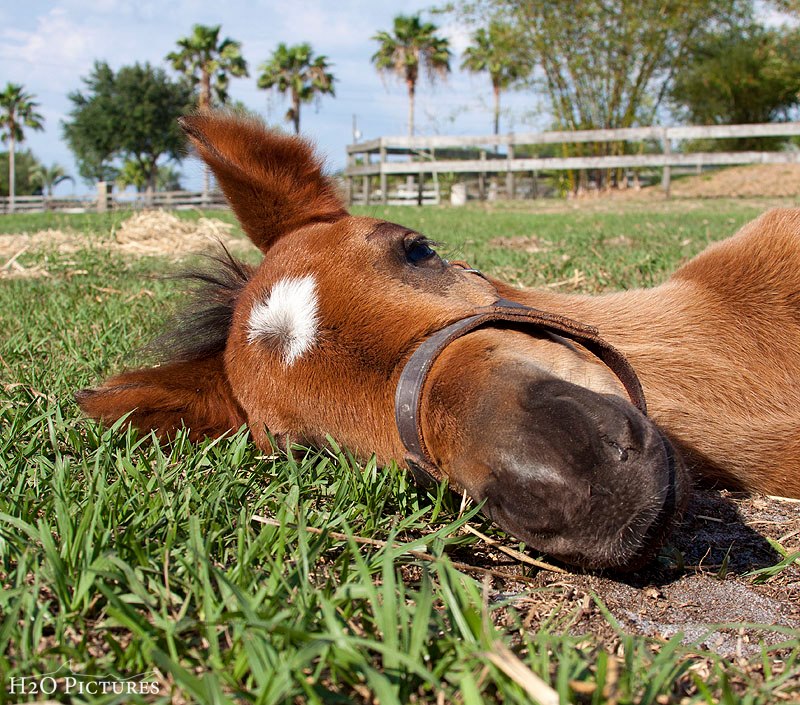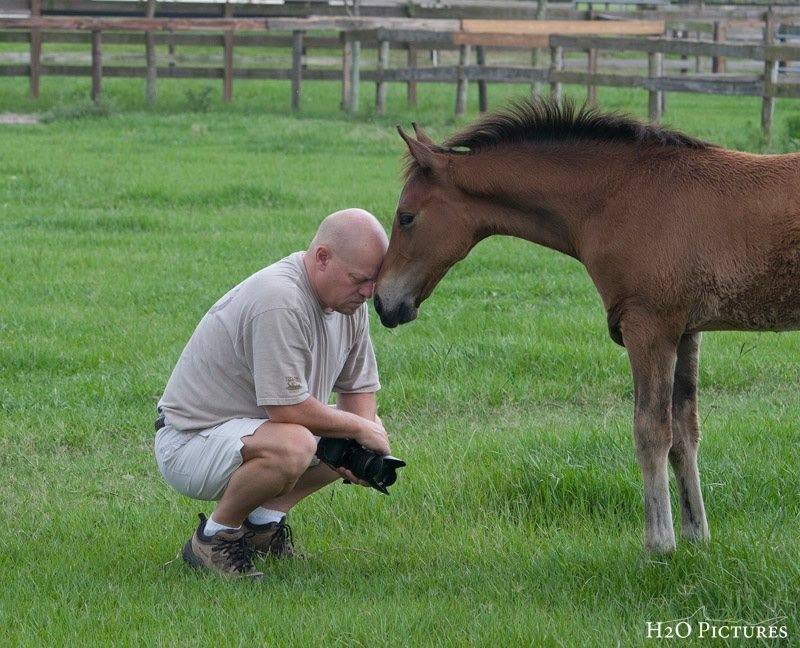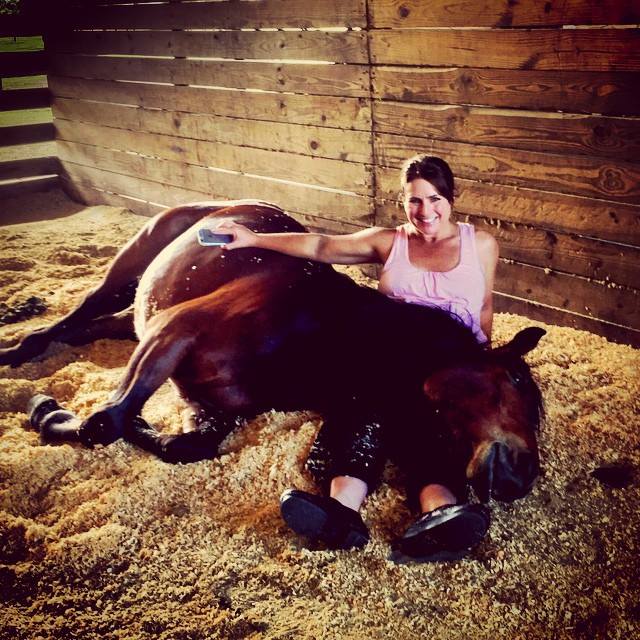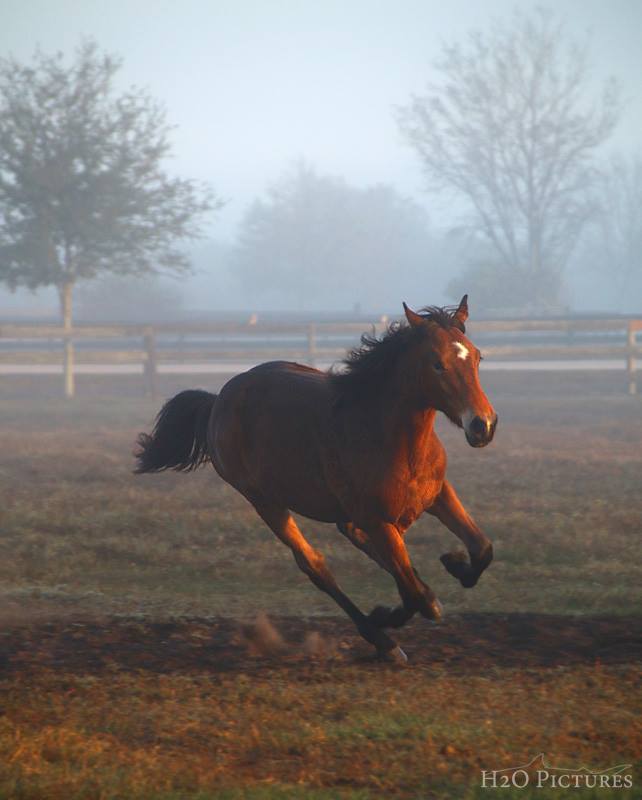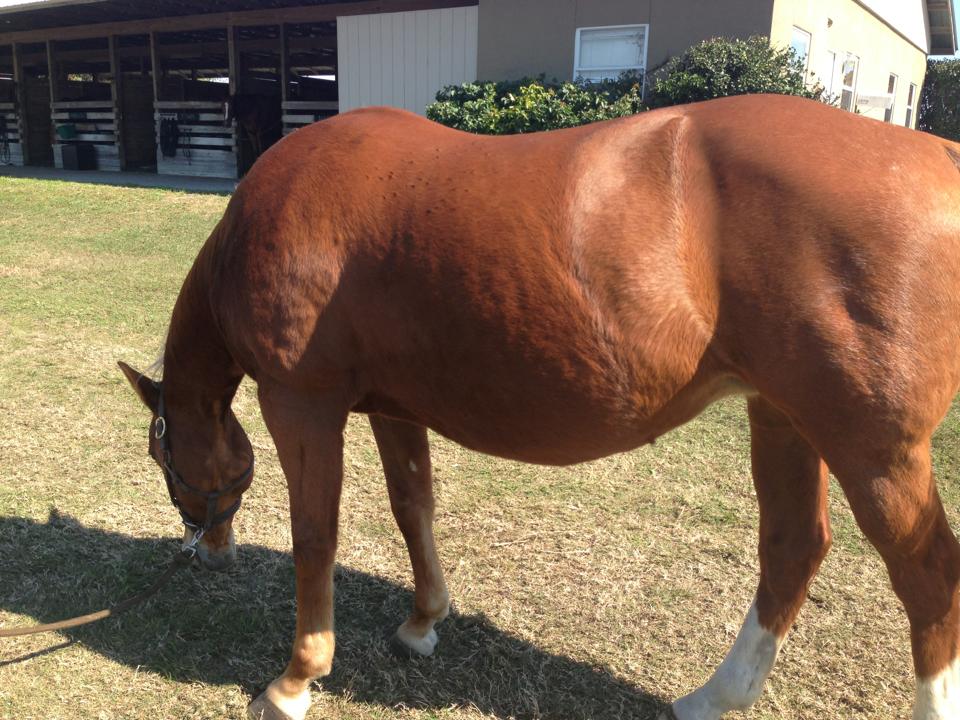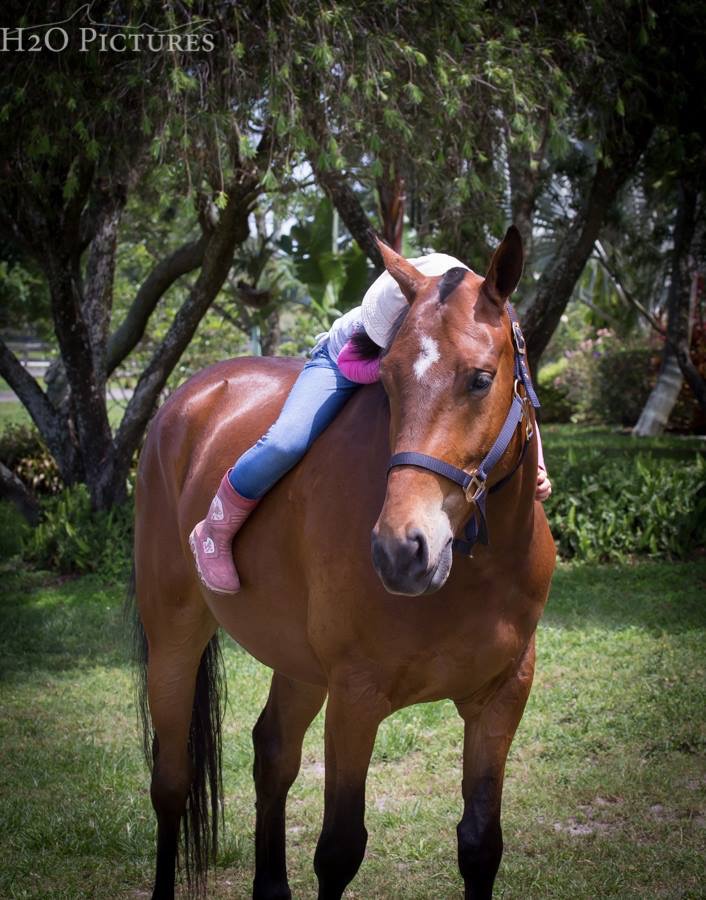By Jaymie Klauber
You are about to embark on a wondrous process –thrilling, fulfilling ….expensive. Do make sure you are breeding your mare for the experience, and not with thrift in mind, as in getting a free horse. Consider, besides the often costly affair of actual breeding, the vet bills, buying feed … more vet bills, for which you get nothing in return except love for three years before riding enters the picture. Release any notion that this will be more economic than buying a horse.
The experience, however, is priceless. One you’ll not likely forget.
Choose your best mare: conformation, color, flash, athleticism. Congeniality factors in. Selecting a people-friendly mare simplifies the entire affair for both you and veterinarian. (In my case, many wondered why I picked Paula, a mare who lives to resent and avoid humans.) Then you must choose the ‘baby daddy’, whose accessibility is not unlike a Match.com bachelor. Breeders have websites. And as the parental arranger of this coupling, you have high standards, surely seeking a harmonious outcome. You might want to jot down the criteria that must be met. Note: female owners may find themselves listing qualities they’d like in a man … must be at least 15 hands tall with shiny hair and a kind eye, enjoys long walks on the beach ….
Don’t be shy about negotiating stud fees. A breeder might reduce fees, knowing he can make it up in volume. Stallions (not unlike aforementioned bachelors) have a nearly unlimited supply of semen. Thus they are high-strung, horny, and often unruly. In fact most barns and equestrian centers of any riding discipline do not keep stallions.
If you want to save wear and tear on your sensibilities, there is the option of artificial insemination, wherein you can find an impressive stallion online or by referral, and arrange that when your mare goes into heat, his sperm will be ‘collected’ (a process better left to the imagination) and Fed-Exed to your vet, who then inseminates the mare. This can be more costly, and robs you of the in-depth uncut version of the adventure.
Fortuitously, in the spring of 2012, there happened to be a well-mannered stallion at the Polo Club, that one of the pros was playing in polo. I went to check out the stud, whose name was Ice Man. I found him appealing, and haggled with the pro/owner as to the stud fee, eventually reaching an agreement. We shook hands on the deal, although most breeding of registered breeds is formalized by paperwork. In this case, we would be creating a hybrid (well, mutt of sorts), hoping for a highly athletic cross of his American Thoroughbred and my Argentine Thoroughbred. No money changed hands: interestingly, you need not pay until you have a live foal.
Determine when you’d like your mare to ‘drop’ the foal, and count back eleven months. Yes, eleven months gestation period, which can seem an eternity. Then off you go to the vet for a negative uterine culture, and a shot to bring your mare into ‘season’. While some mares are quite obvious about being in heat (tails held high in the air, exposing themselves unashamedly, indiscriminately --even around geldings), with others it is hard to tell. Thus, the inducing injection provides a clearly defined time frame. The vet will need to examine your mare a few times, check the uterus to see how far into the heat she is, and if she is ovulating.
At the optimal time, I rode Paula over to the stallion’s barn. As his name would suggest, Ice Man is not a romantic. No candlelight, no enticing whispers, no nibbling at her forelock. Simply straightforward: slam bam thank you ma’am: the Ice Man cometh. It was powerful though, wondrous, actually --nature working its birds and bees magic, as we’ve seen on the Discovery Channel….
Four mornings we rode over for a quickie, and walked home, back to the barn. Paula seemed fine with it, but I felt somewhat uneasy, as if it were the walk of shame following a one night stand.
Within two weeks, my vet, Dr Bill McGinty, could verify Paula’s pregnancy. He offered a fundamental timeline covering the next eleven months, until the bundle of joy would arrive. We planned a few visits for vaccinations and occasionally ultrasound or palpating. It was unnerving to learn that the vet need not be present for the blessed event. Over time I asked Dr. McGinty dozens of questions; he patiently offered standard answers, always adding the caveat, “that is, if your mare read the book”.
It seems Paula had indeed read the book: everything was on course. As her due date approached (eleven months, five days after conception), I had to tackle the fear surrounding the actual birth (!), and figure out how to handle it. I now had just one month to research this phenomenon, its uniqueness compelling me toward obsession. Every book and all online information includes a list for a “birthing kit”, so I gathered all the items, hoping I would not have to use them, because many are required only in an emergency/unusual situation. But in due diligence I prepared.
Two weeks before due date, I purchased a baby monitor and began confining Paula in her double-wide stall (she was rather double-wide herself at this point) at night which is when 95% of mares have their foals). Exercising restraint by not scoffing at my 24-hour surveillance plan, the laid-back Dr. McGinty said I could just leave her in the paddock and one morning I would find her baby beside her. But I wanted to witness the miracle and be involved in case help was needed.
On the first Saturday in March, the coldest night of the year, transfixed on the baby monitor, I saw Paula pawing and sniffing the ground, and pacing her stall. My advice: rather than awaken your disinterested spouse, immediately phone a horsey friend. Claudia came right over. We wrapped Paula’s tail with vet wrap and washed her ‘private area’. Soon, she lay down and quickly, with a certain grace, sent forth her foal. Thankfully, it was ‘by the book’.
Coincidentally, the owner of stallion Ice Man was staying in my barn apartment for the weekend, so came to help, lending his vast experience. Paula actually had done all the work, but he helped to clear the placenta, then guided me to sit down right beside the baby boy, who appeared black, wet, and all legs. Paula licked her baby while I ‘imprinted’ on him, rubbing and touching him all over his body, in his mouth, nose and ears so he would know me forever and be unafraid of humans in the future. Imprinting is essential to establish your relationship with the foal, but it is important that you allow the mare and foal to bond.
So within three hours of Paula sniffing and pawing the floor, there was her beautiful baby boy, Ice Ice Baby, son of Ice Man, on his feet and nursing. And we humans actually managed to get a few hours sleep that night.
A word to the wise – from the newly wise: BE CAREFUL in the stall with Momma and Baby, and avoid having too many people nearby ogling and cooing at Baby while in the stall. If Momma starts to spin around and encircle the foal, get the hell out of the way. Fast. Faster than I did, when Momma, protecting her baby, dealt me a double barrel kick. After that first day, though, Paula was happy to let me assume some of the responsibility and keep Baby entertained while she enjoyed her time to eat and rest.
Ice Ice Baby has been friendly, playful and kind from the get-go. I feel gratified and exuberant when he whinnies upon seeing me, and runs to greet me in the paddock. Oh, what a feeling!
Over the next five months Baby grew, loved, romped, and of course, ate and contributed his share of fertilizer to agriculture. As is demonstrated by most horses, he could often manage a mishap and sustain injury requiring treatment. (Note: Your fretting over it does not promote healing). On the brighter side, a colt then becomes accustomed to handling which includes first encounters with the farrier, and other close-up care such as deworming, wrapping, brushing, and a clipper trim. Ice Baby was a rock star through everything; his personality the polar opposite of his unsociable mother. I believe I’ve seen Paula actually roll her eyes disdainfully when observing her offspring consort with humans, being a sappy love kitten at that. Thankfully he inherited his daddy’s cordial temperament.
As Baby grew we could tell he would lose his baby coat, that lighter color fluff, and become a beautiful bay colt – and as summer approached his gorgeous black legs, mane and tale accented his silky copper-brown coat. Handsome and shiny, that boy, a true beauty, as really all horses are.
As for weaning…
They say that nursing can be hard on the mare and make her tired and cause her to lose weight. This is not always the case. Paula and Baby both grew larger. But finally I determined it was time to wean baby from momma. Now, here is where you’ve got to appreciate technology and social media: I posted an ad on local Craigslist asking if someone else had a mare and foal they wanted to separate (wean). Sure enough, a pleasant young woman, a Sarasota Sherriff with a ranchette off East Fruitville, contacted me and we set up the ‘exchange’. I had anxiety about separating momma and baby, having heard and read horror stories about both of them crying for days on end. I waited for a weekend that hubby would be out of town, as I knew that kind of horse related stress/drama would drive him nuts too. Then we set the plan in motion. On the weekend of Ice Baby’s five-month birthday, I went to my new friend’s ranch and picked up her beautiful mare and cute appaloosa filly (four month old baby girl) and brought them to my ranch. Holding the mares outside a paddock, we introduced the youngsters inside the fence line, letting them run and play for a while.
We then moved the babies into the double stall together and quickly loaded the mommas into the trailer, which proved a challenge through their prancing, dancing, and dramatic whinnying. A neighbor brought them over to her ranch and turned them out together while I stayed at home attempting to calm the babies who, astonishingly, were trying to climb the walls and leap out of the stall, crying and crying for their mothers. My friend had it a bit easier, having only to deal with one night of the mommas crying out, which soon settled into peaceful acceptance, perhaps glee at their freedom, now able to eat, and rest as their milk dried up. I endured three days of crybaby antics, which finally subsided, as the babies too seemed to get over it. They became more independent with each passing day. We maintained this arrangement for a month before trading back, the Sheriff welcoming the return of her cute appaloosa baby, and me receiving Paula, who, despite our personality differences, I missed very much.
Now at five years old, true to his affable nature, Ice Ice Baby is one of those horses that anyone can ride, including kids - a perfect angel, so easy going. And he is already one of my best polo ponies, and a favorite amongst my epic trail riding guests. How lucky I am.
Ice Ice Baby & I love to cuddle. A special intimacy I am happy to share…. I often enter his stall and sit beside him while he is lying down. He places his head and neck across my lap and falls back to sleep. We are both rapturous in the total trust and friendship horses rarely show to humans.



























